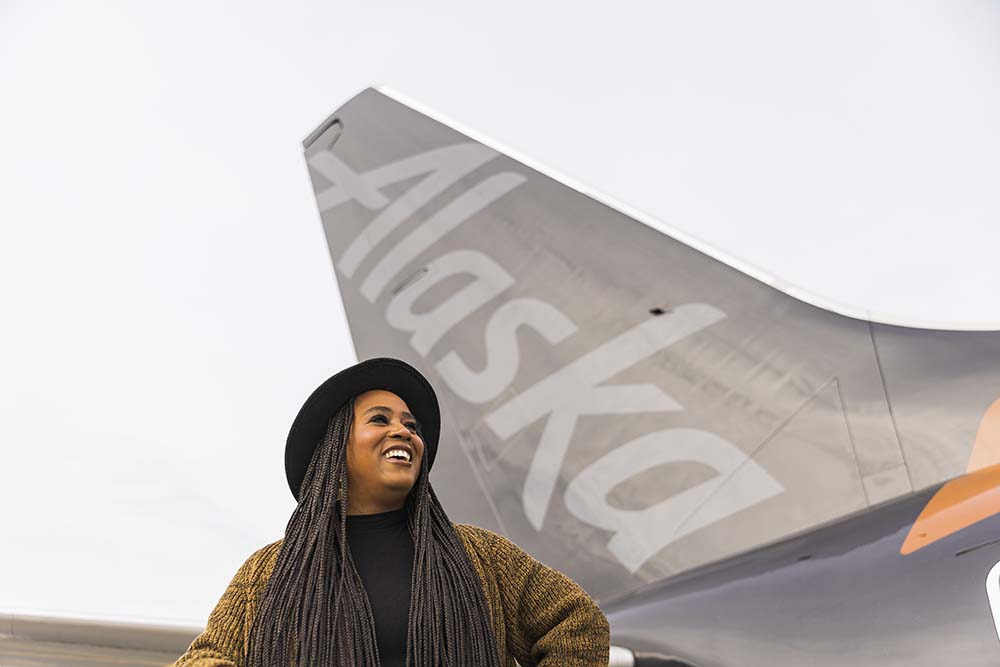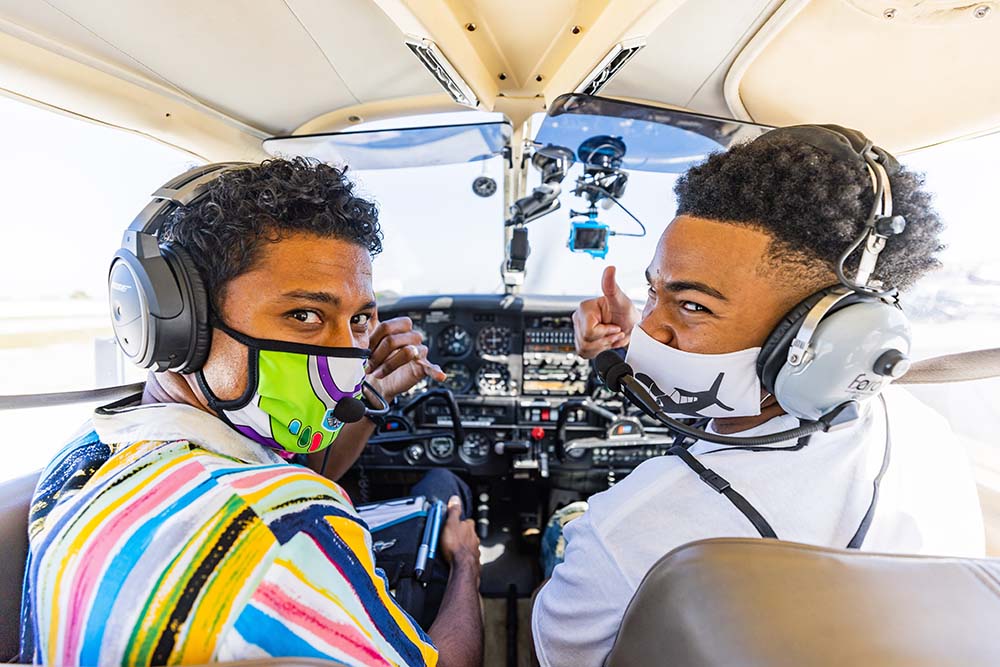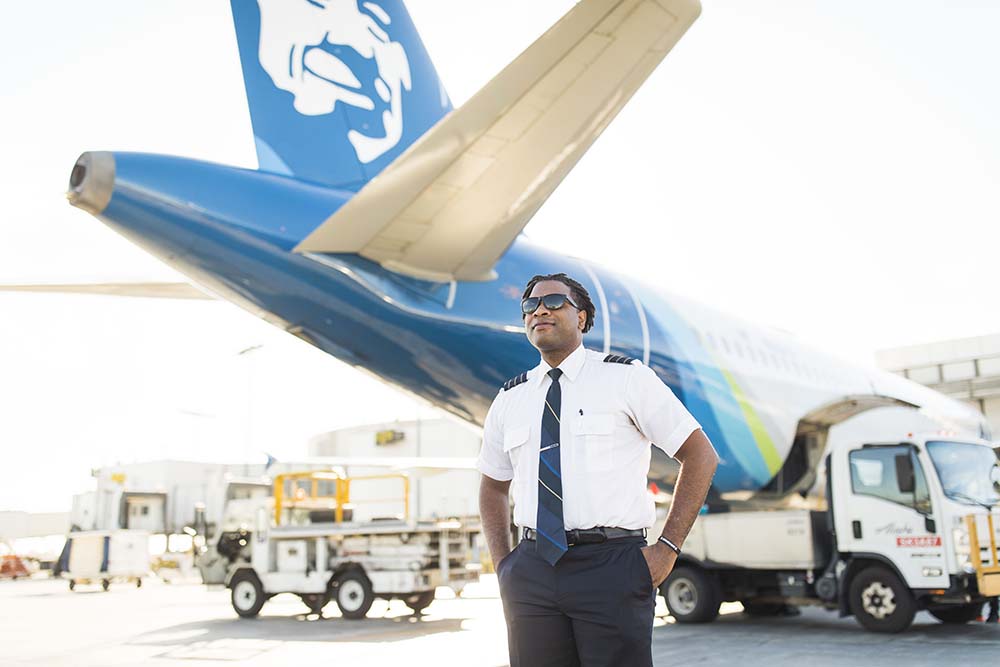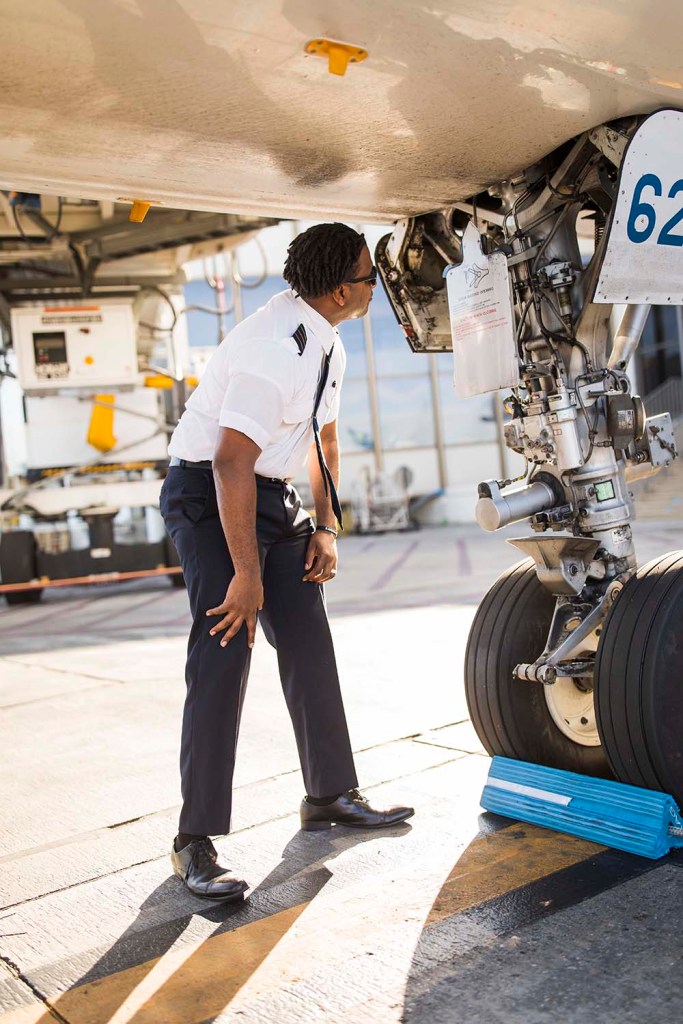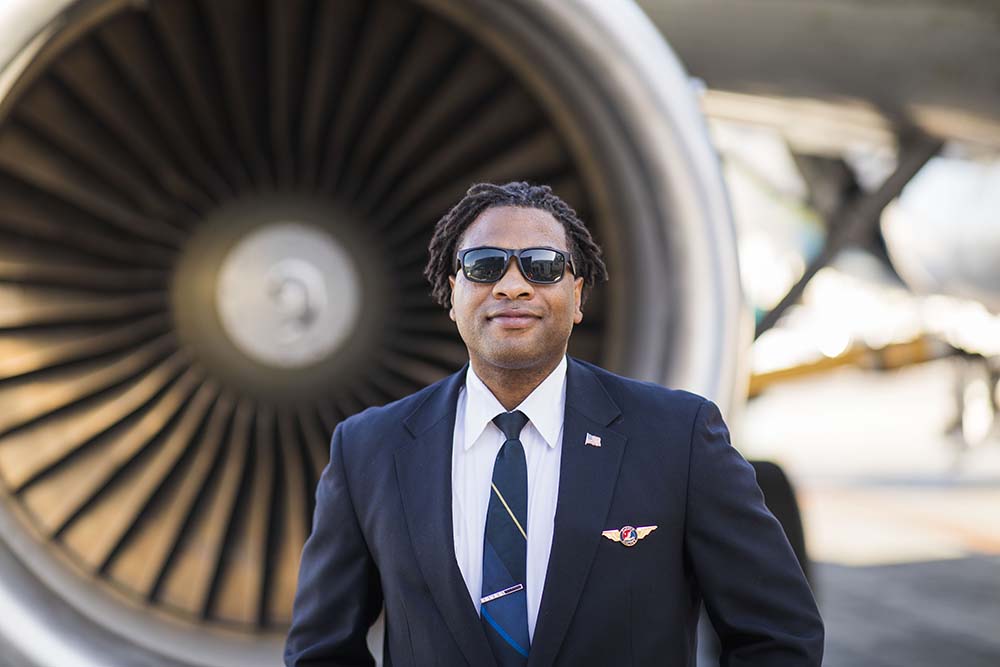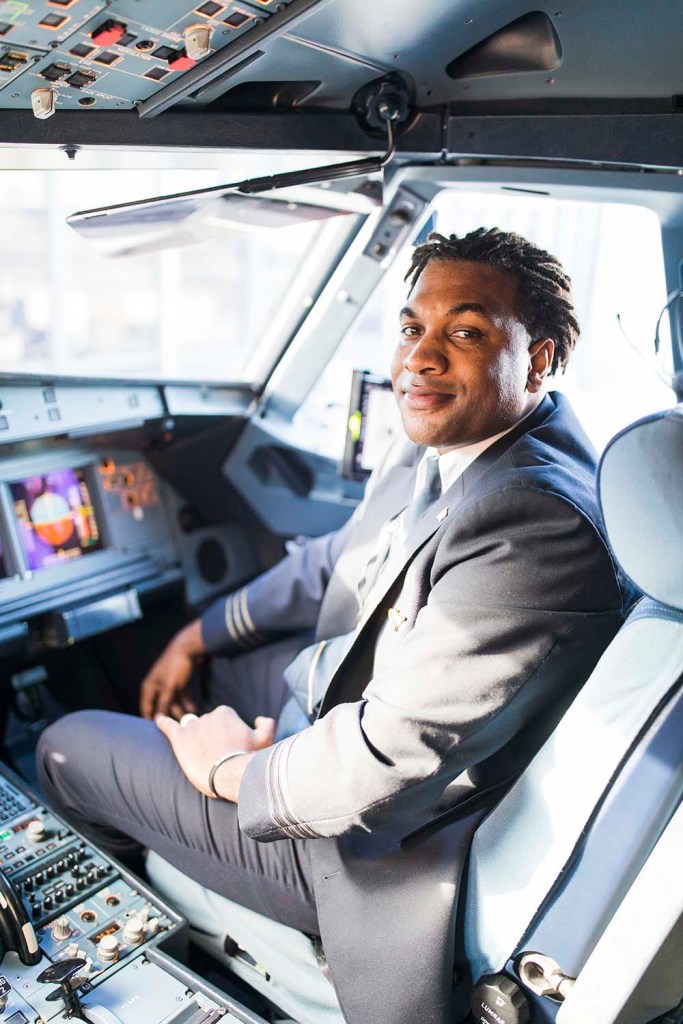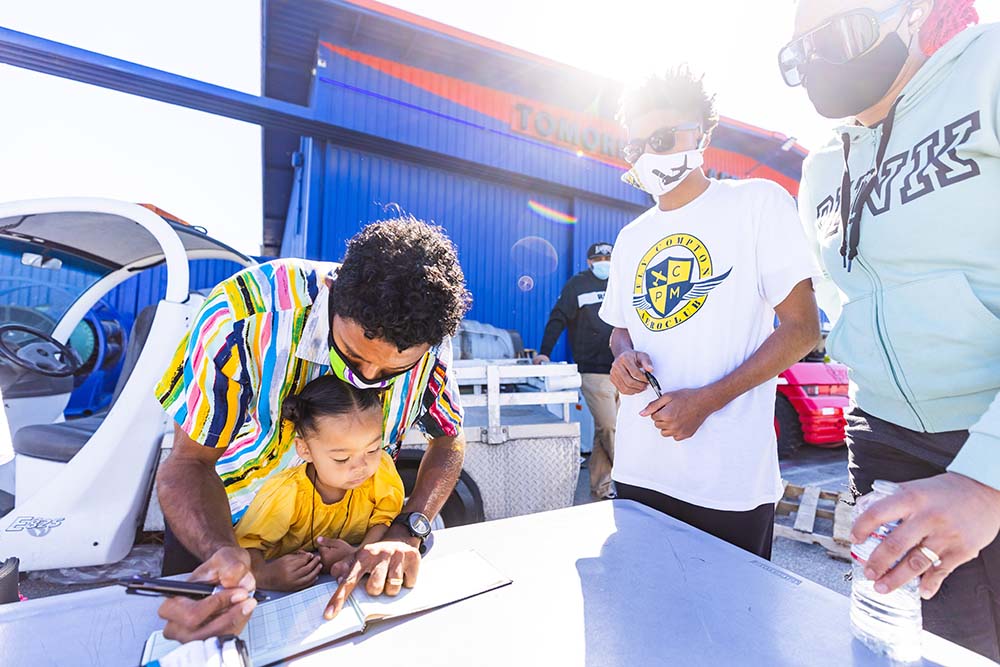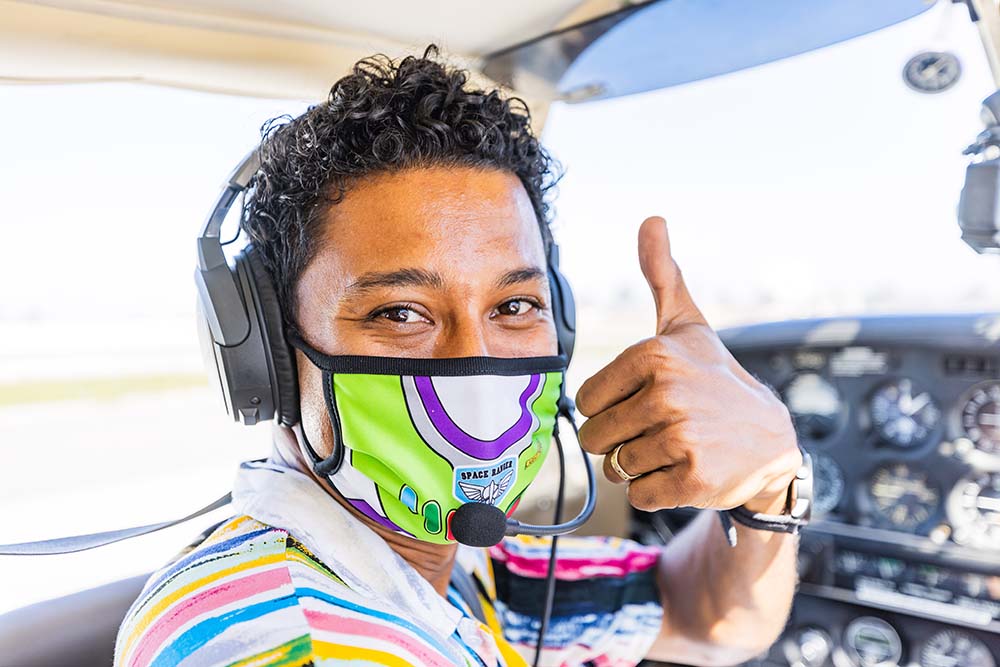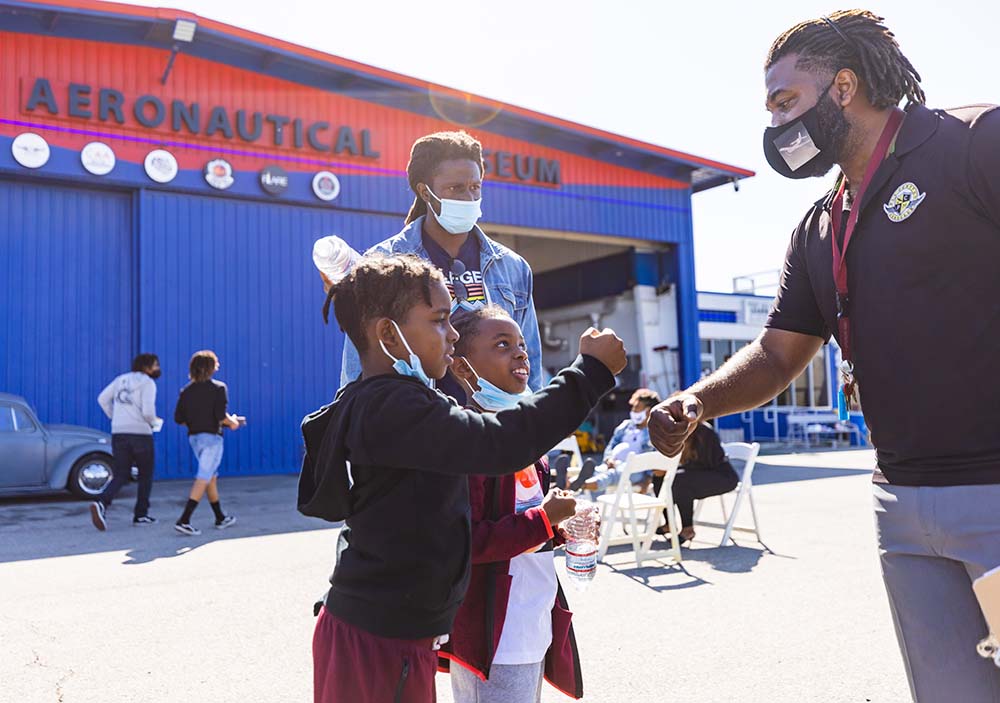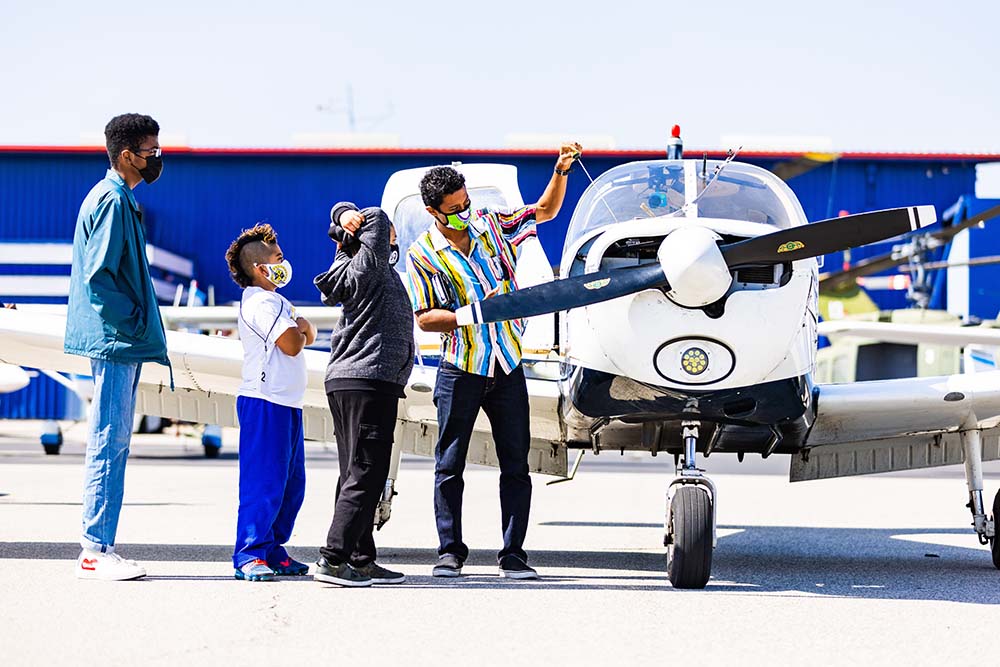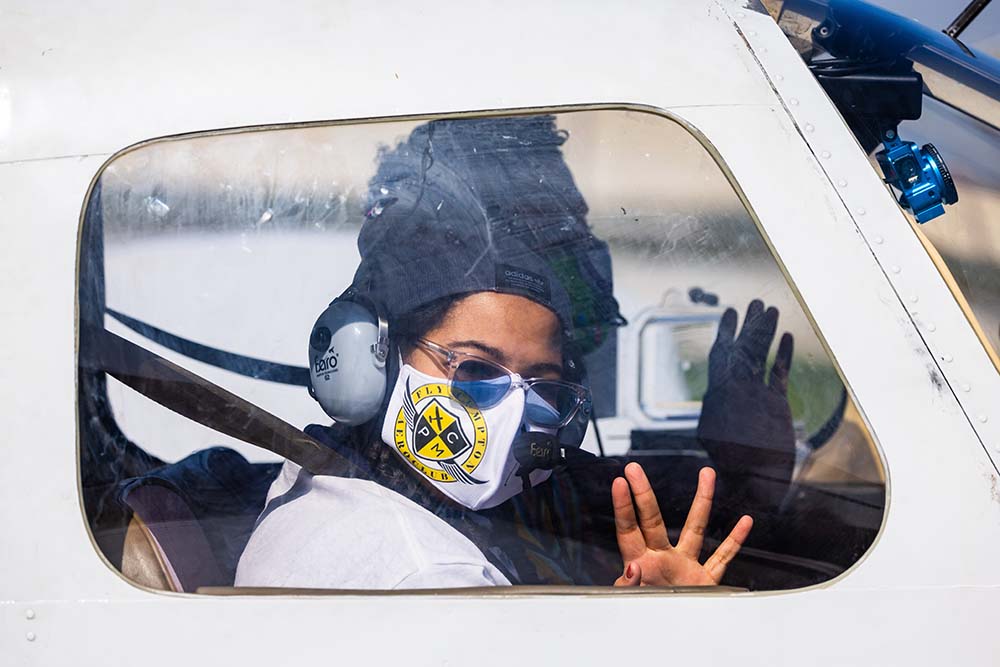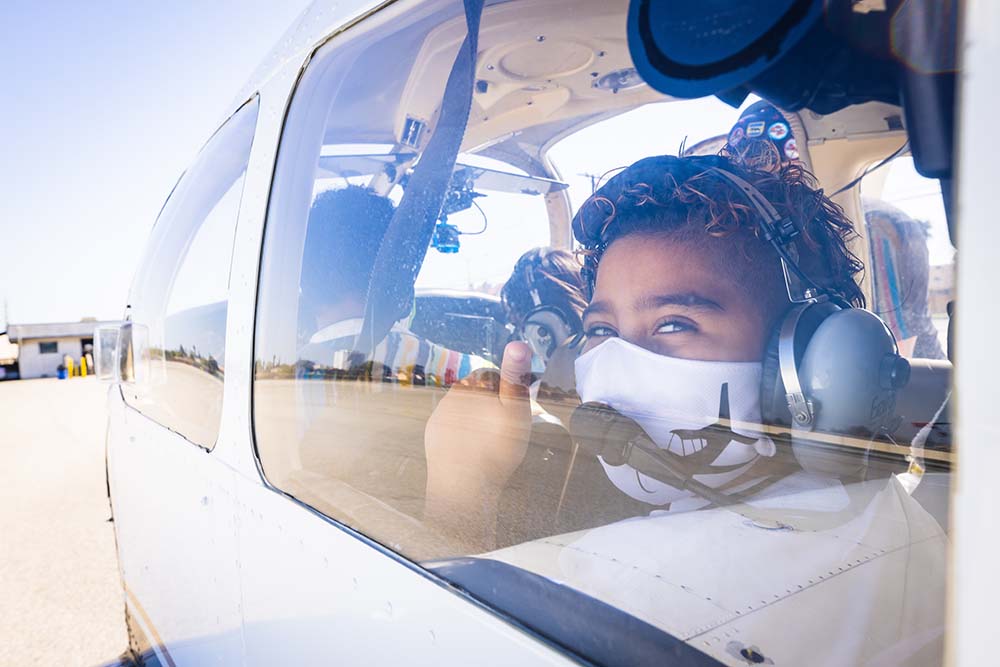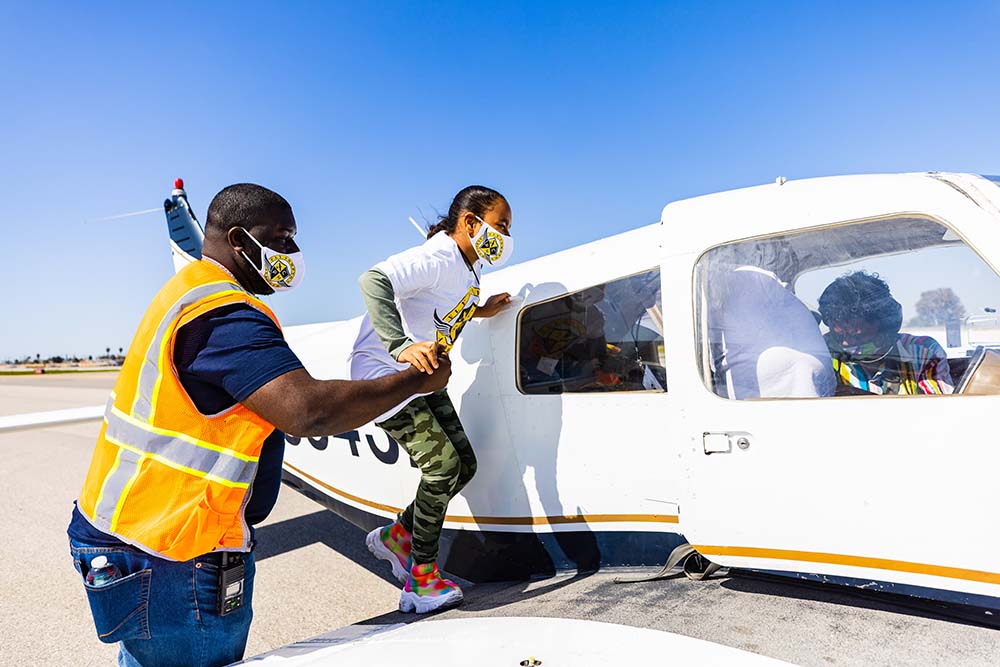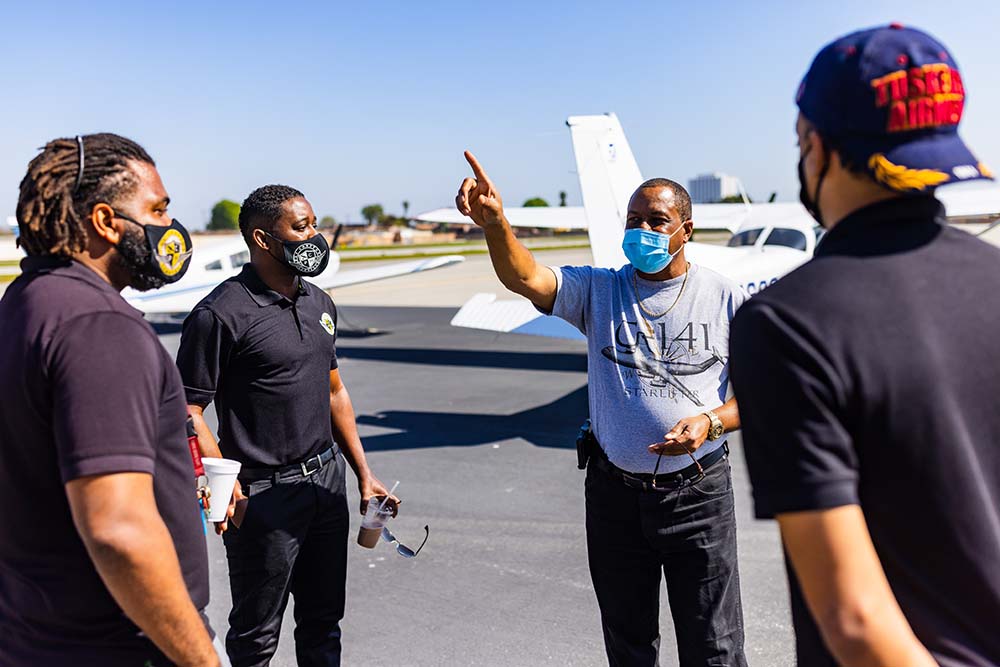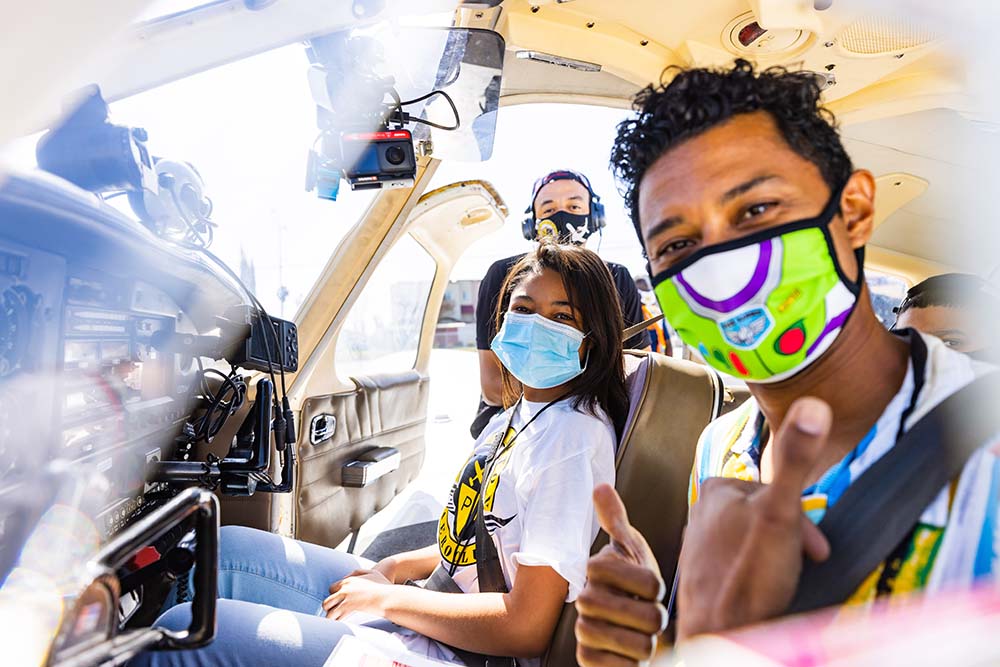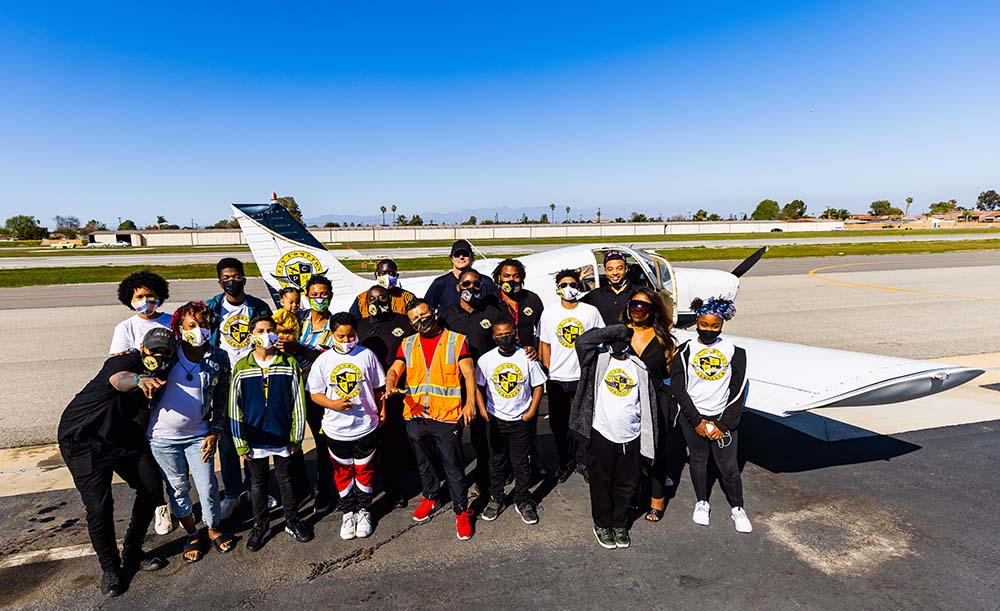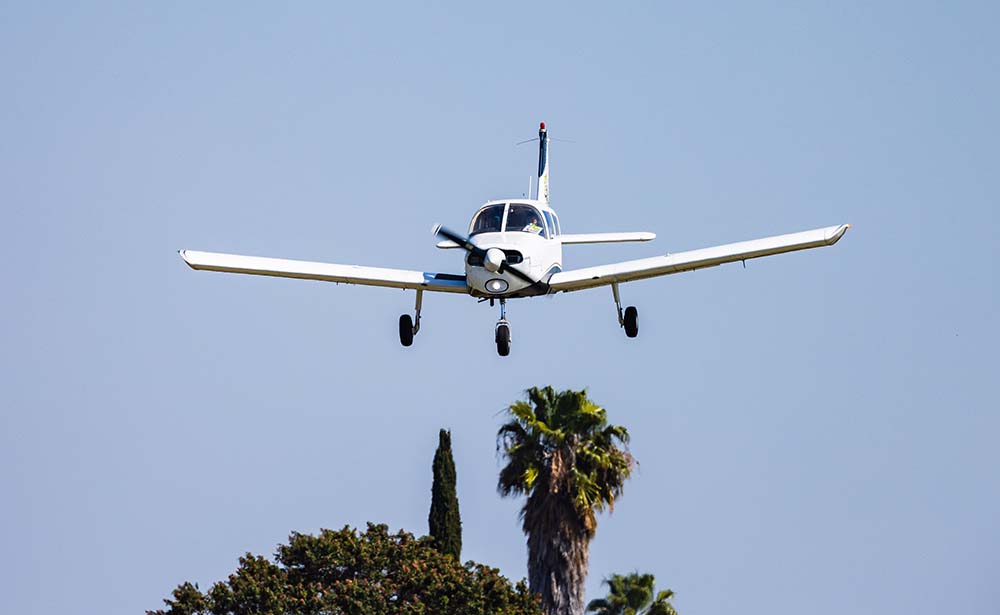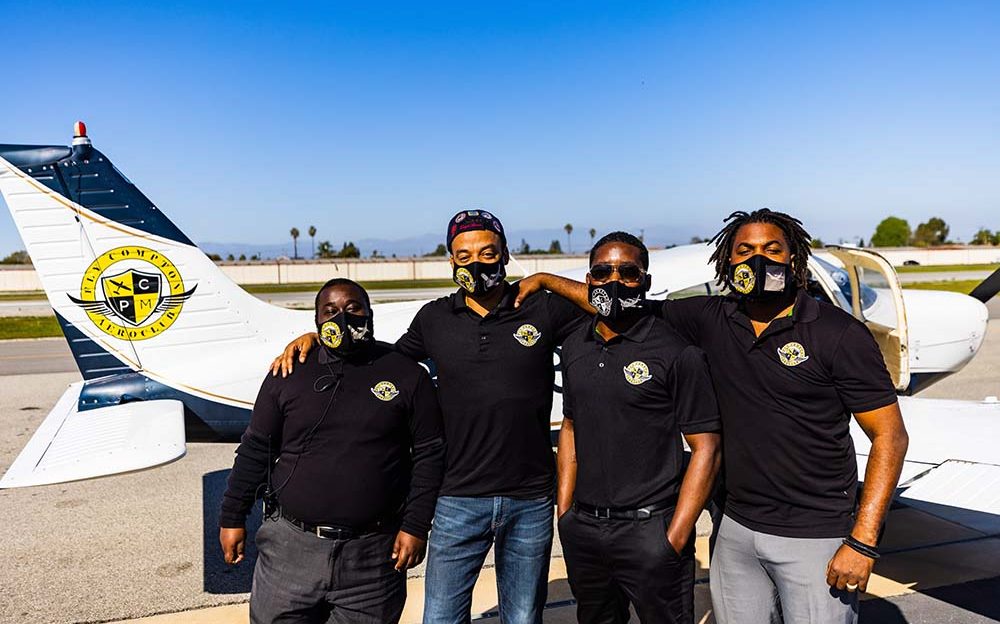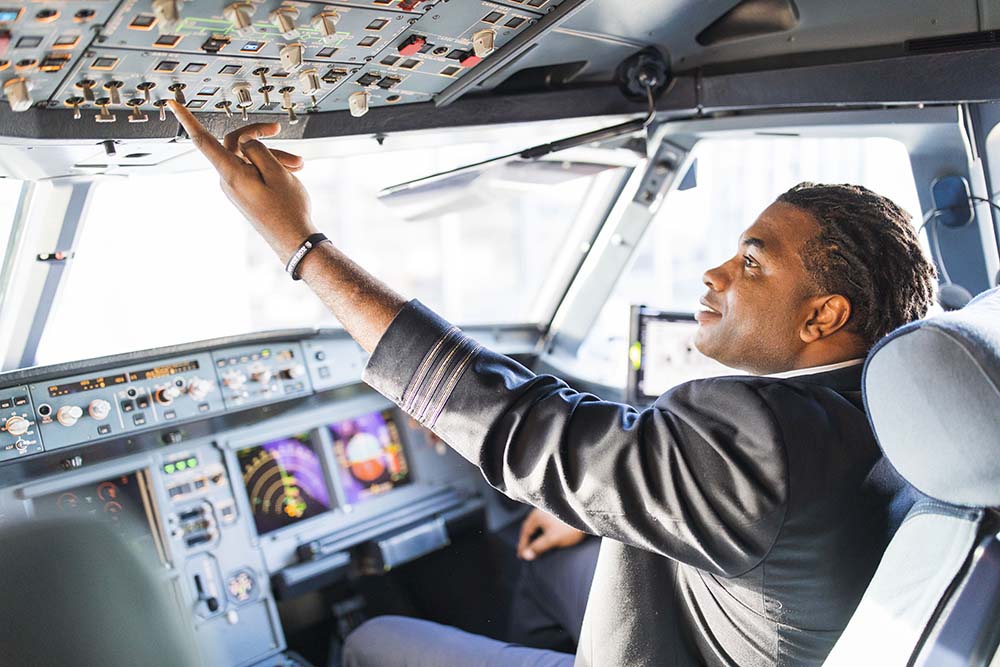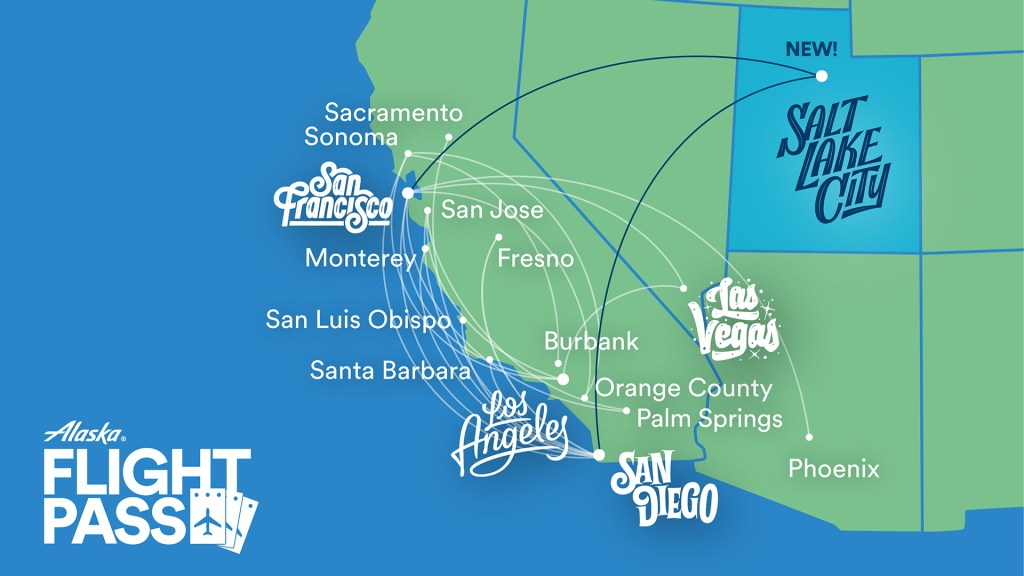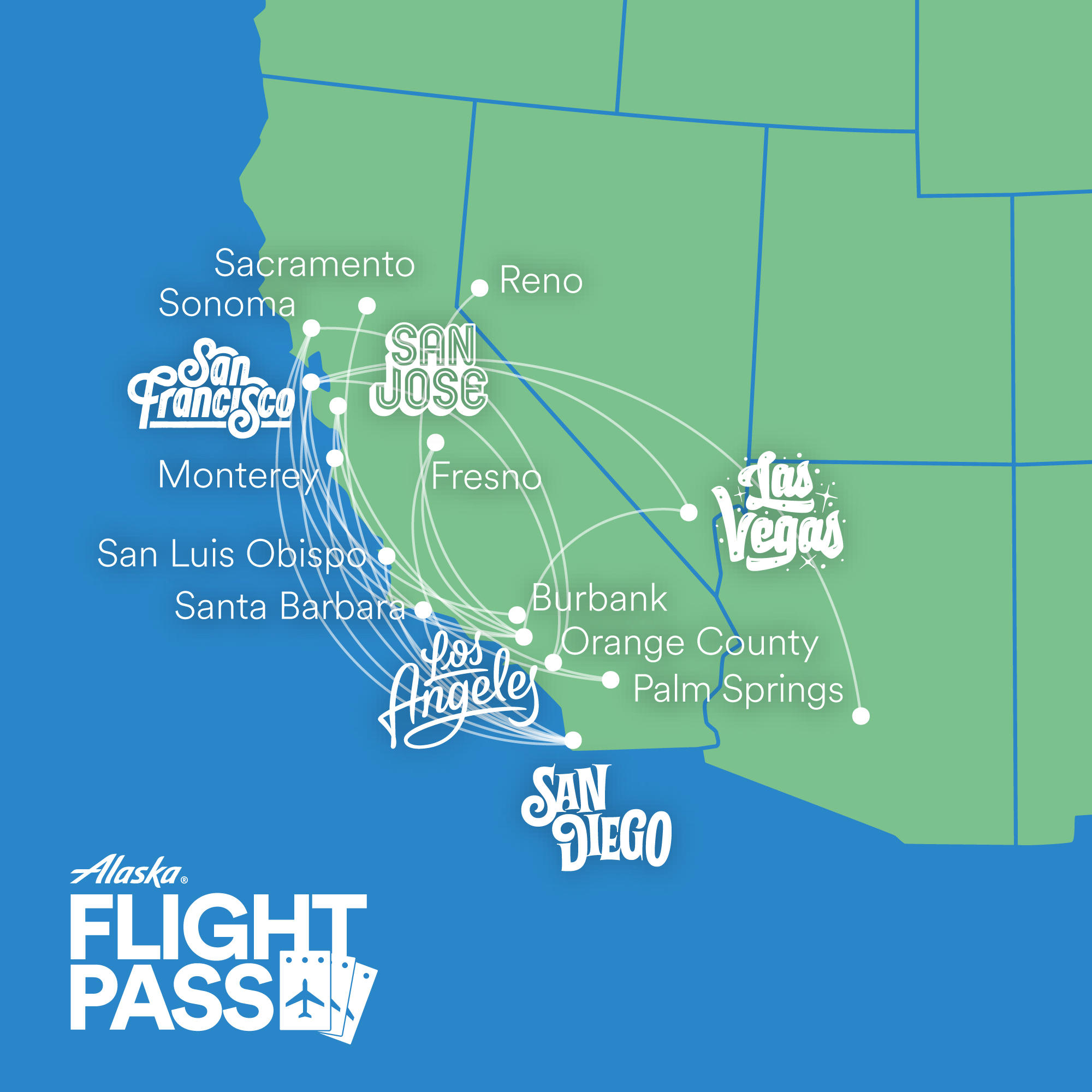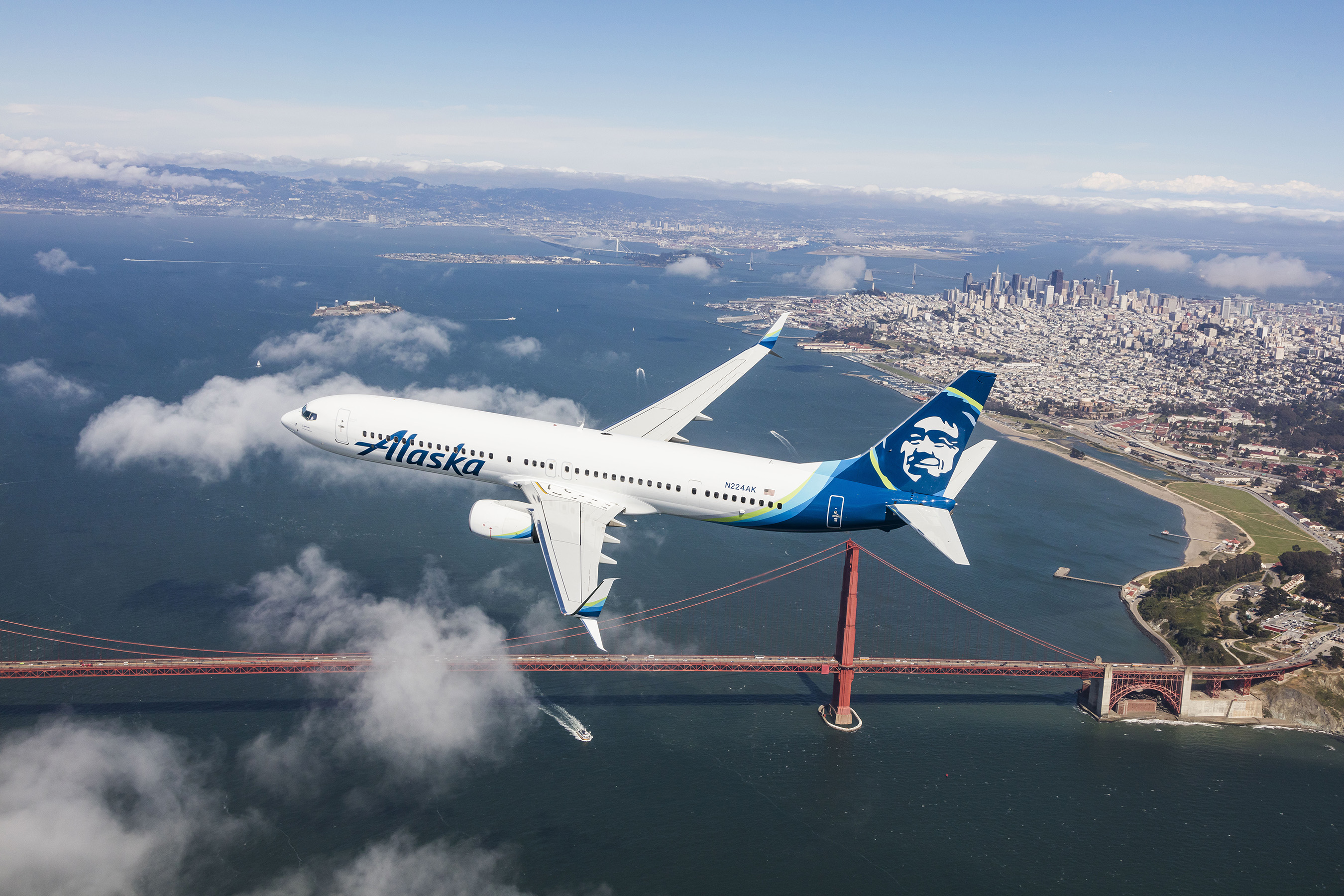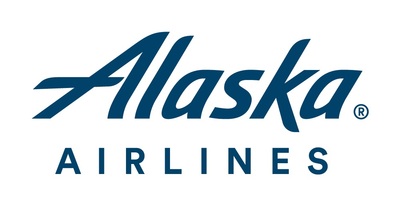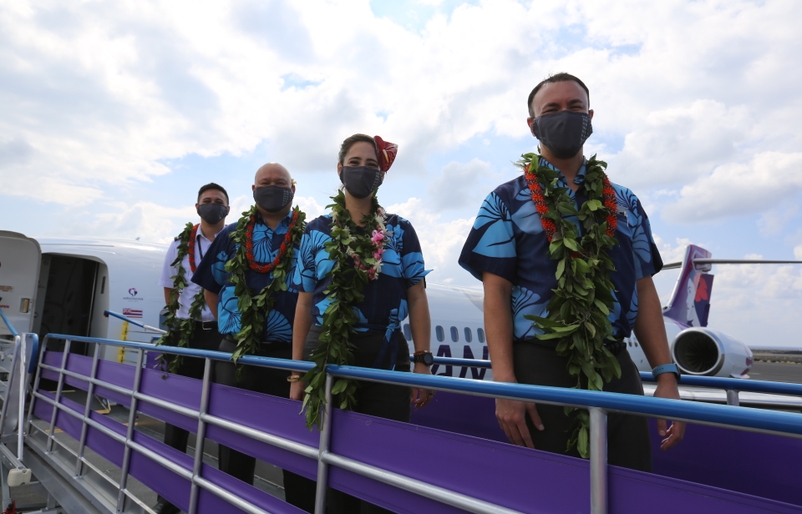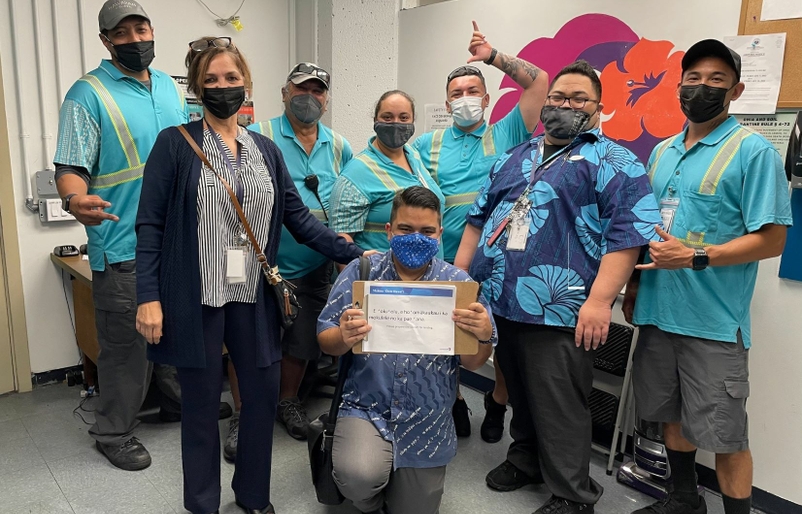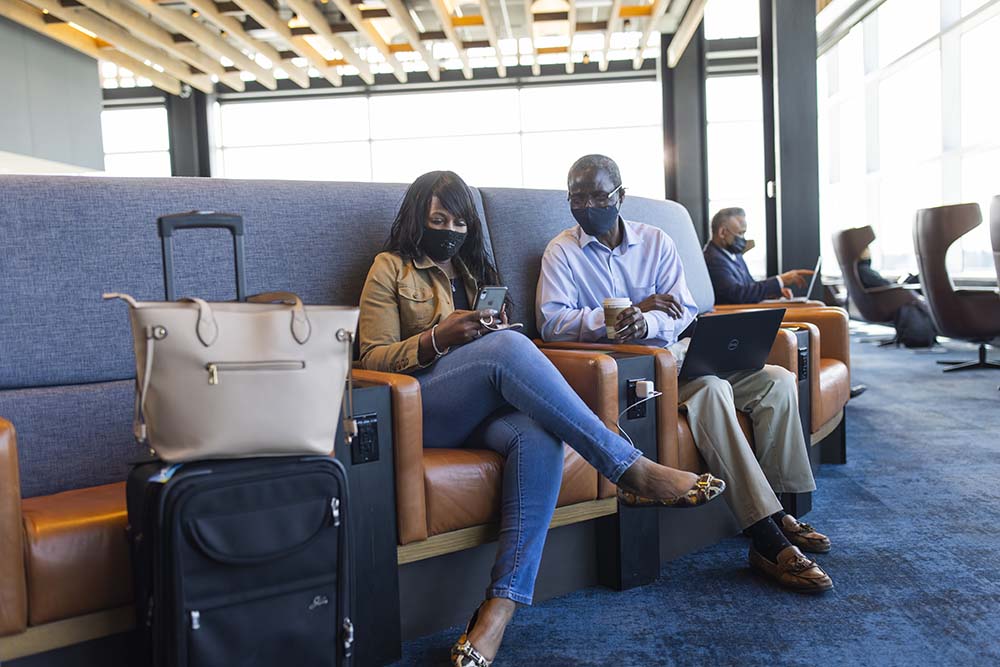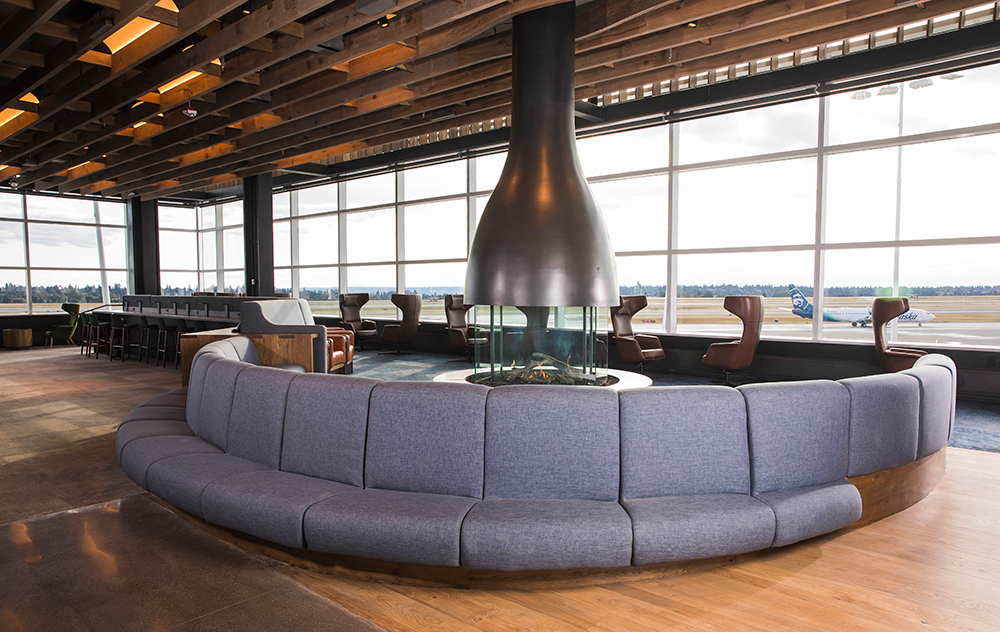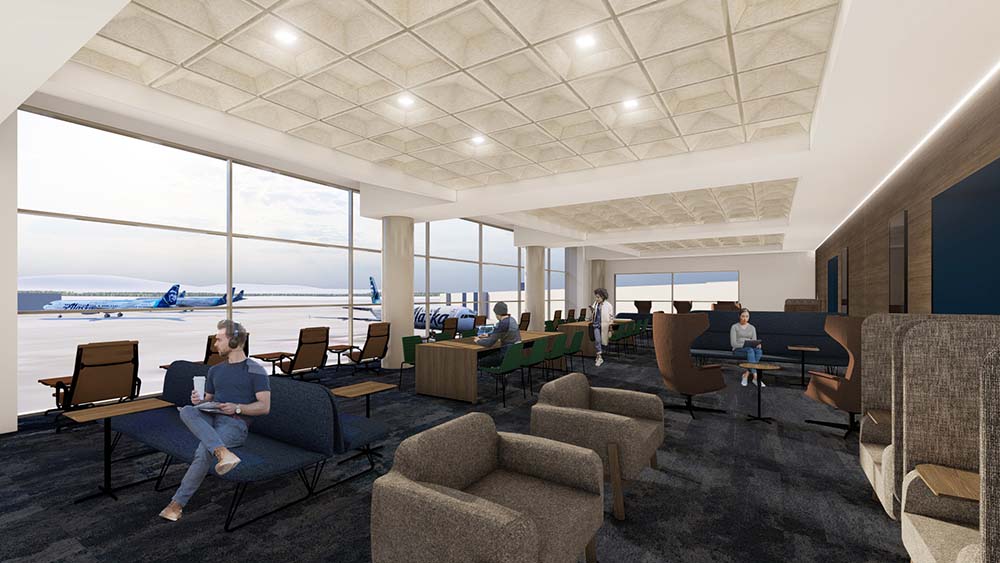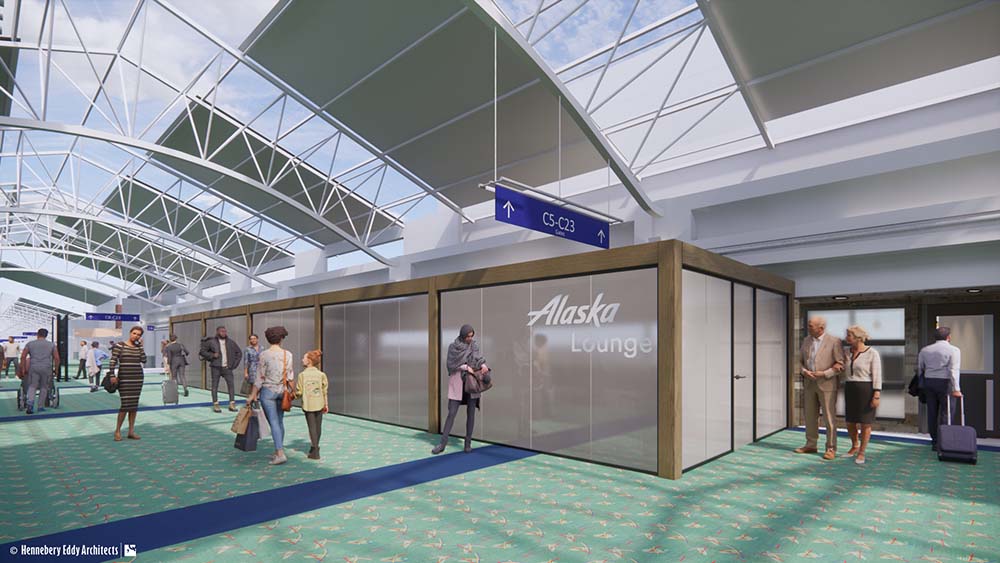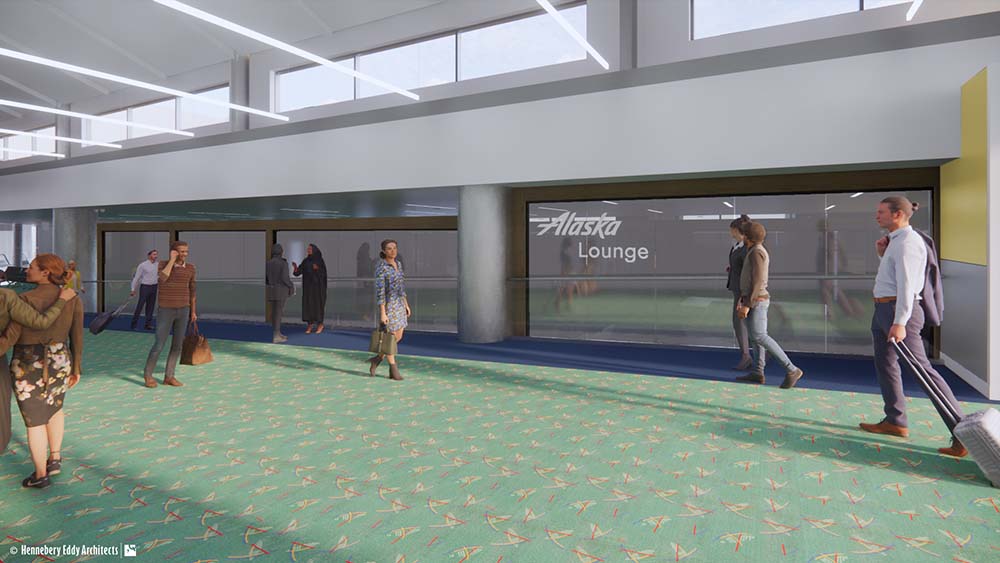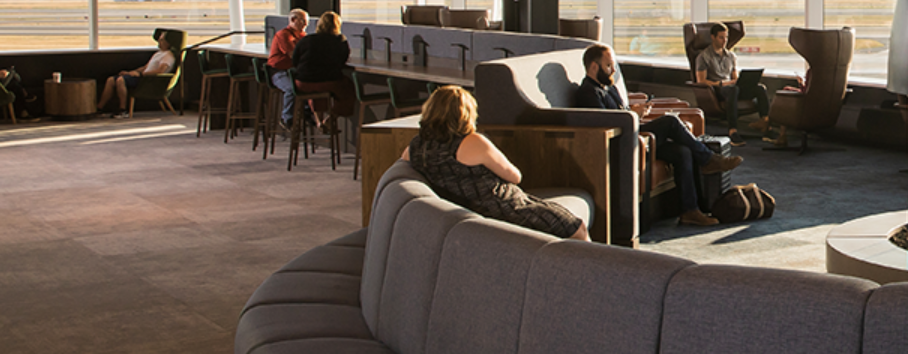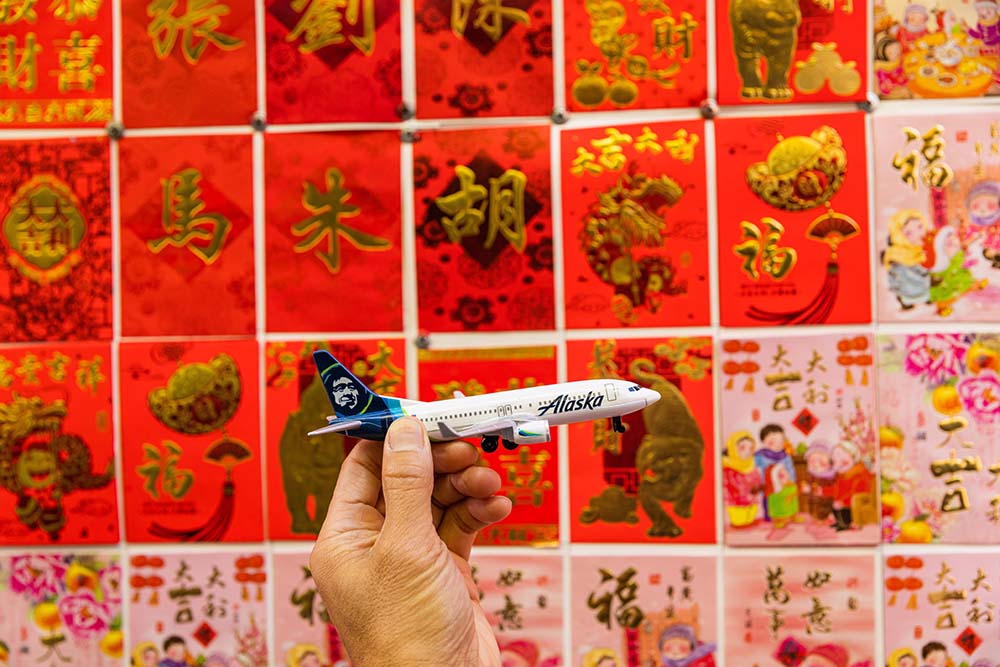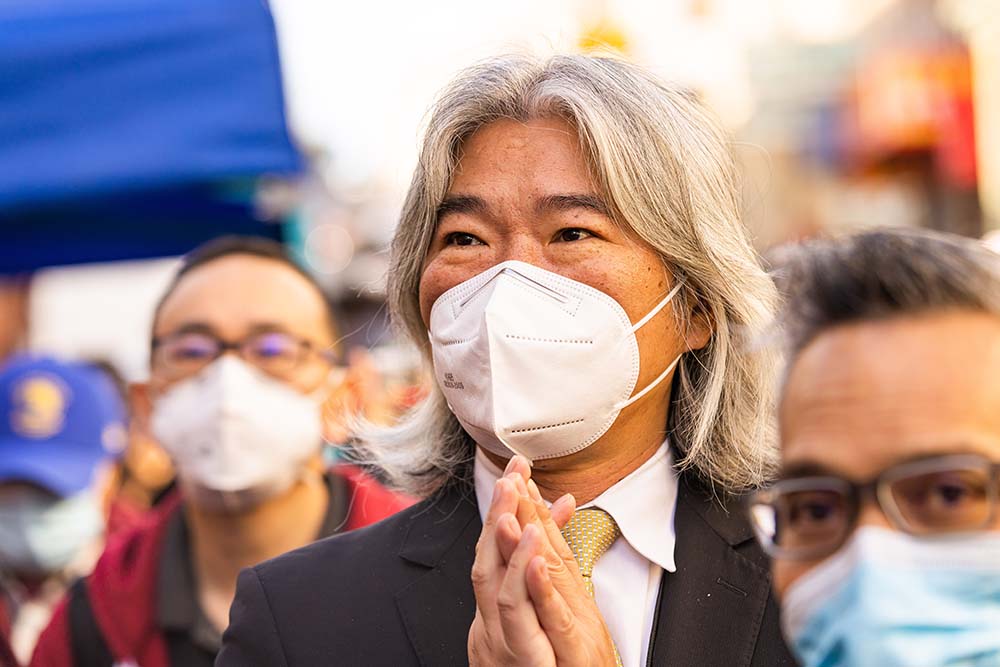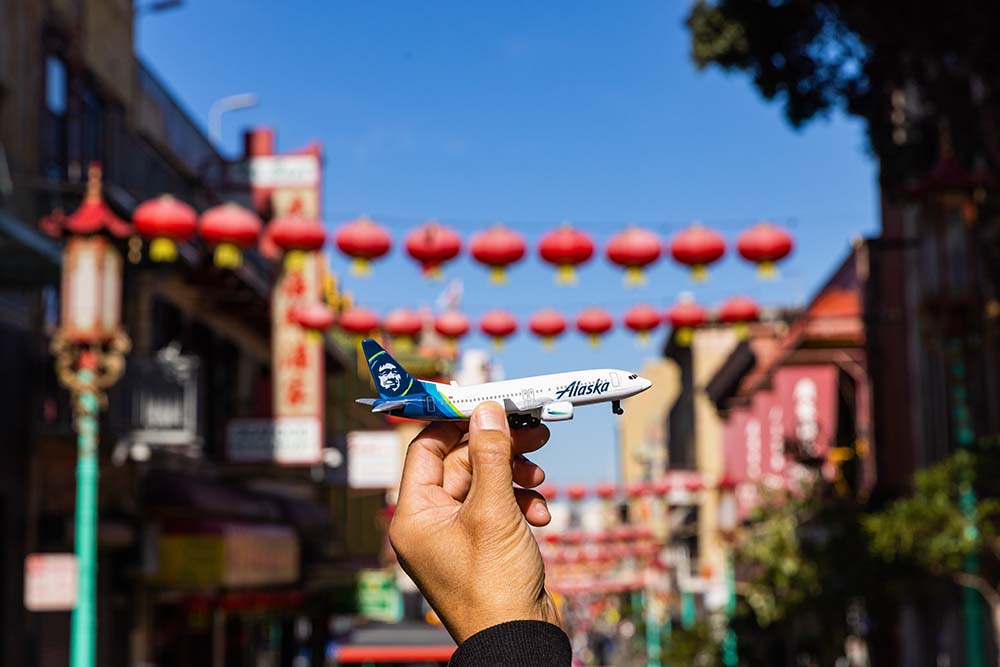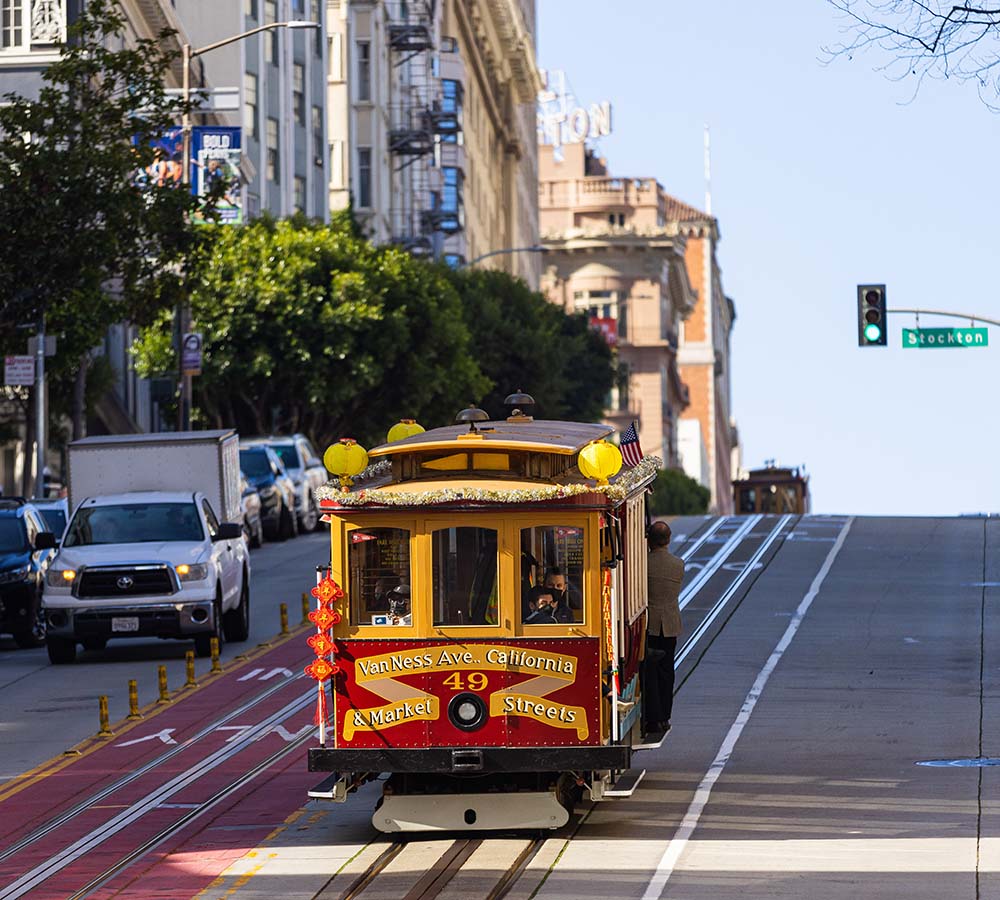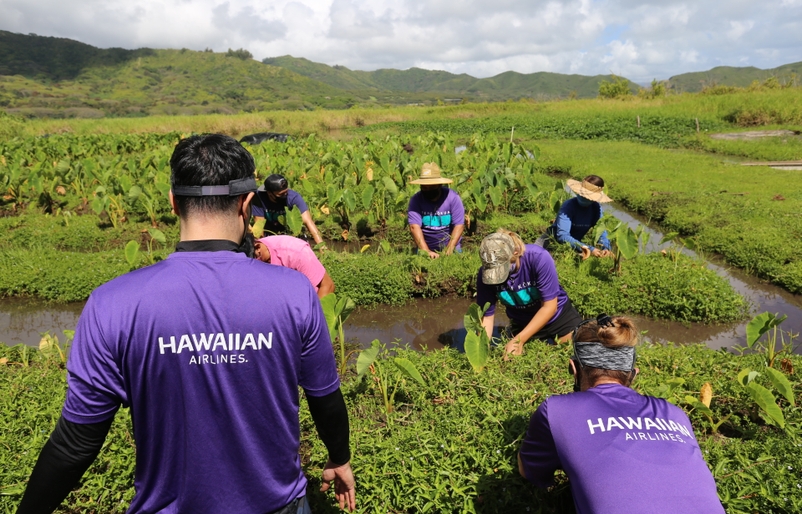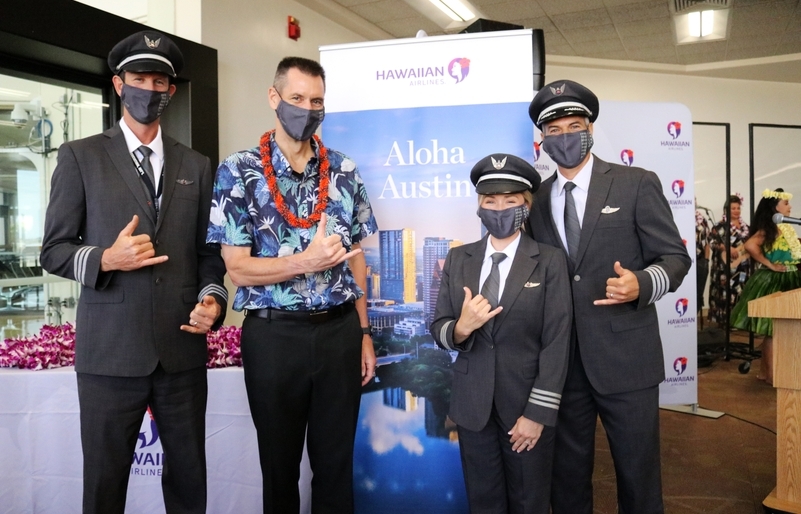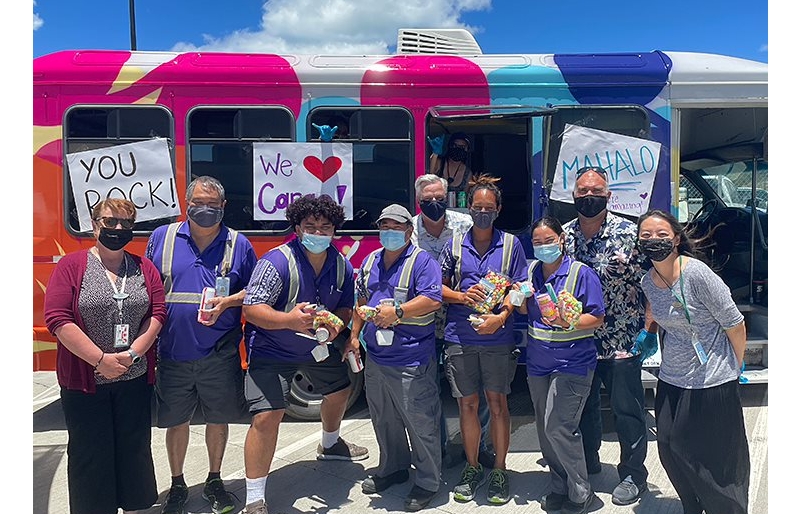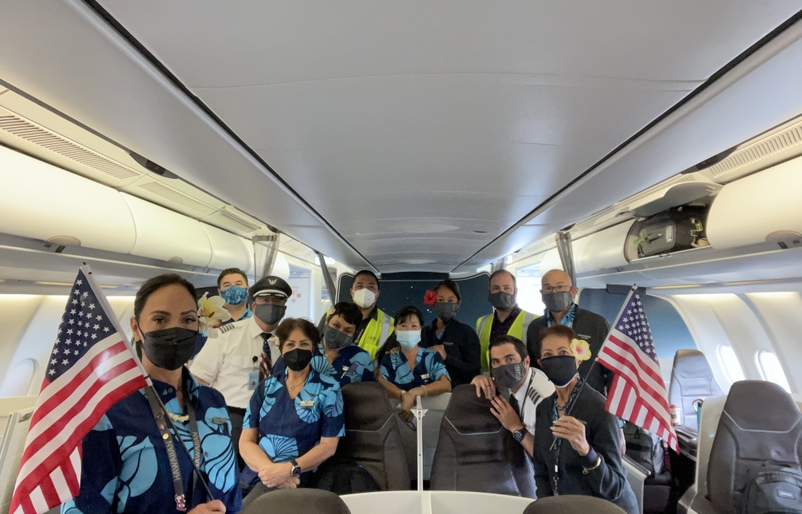How travel brought me & my family closer to Black History
Share

Black History Month has come to mean more to me than ever before since having kids, but my passion for diving deeper into the stories of my people became a daily practice after the 2020 Black Lives Matter marches. As America began to acknowledge the plight of the African-American experience the last 400 years in this country, there was an awakening and understanding that I had never observed before, collective grief and an unlearning that began to take place.

My journey toward Black Liberation took a sharp turn in those moments of 2020. I sought to find ways to show and share Black stories of peace, happiness, freedom and joy, untangling myself from the heartbreaking stories of the past and bringing into the spotlight the stories of hope and strength that typically go untold and it’s felt more important than ever to prioritize for my family as my husband, Ike and I, are raising up our three daughters, Wisdom (9), Courage (3) and Glory (1).
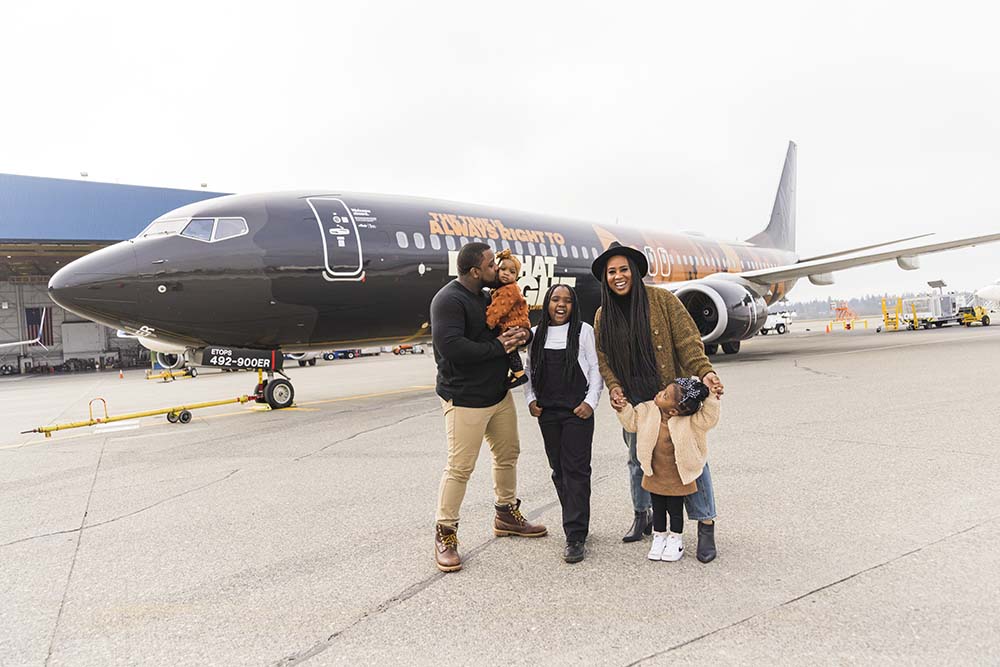
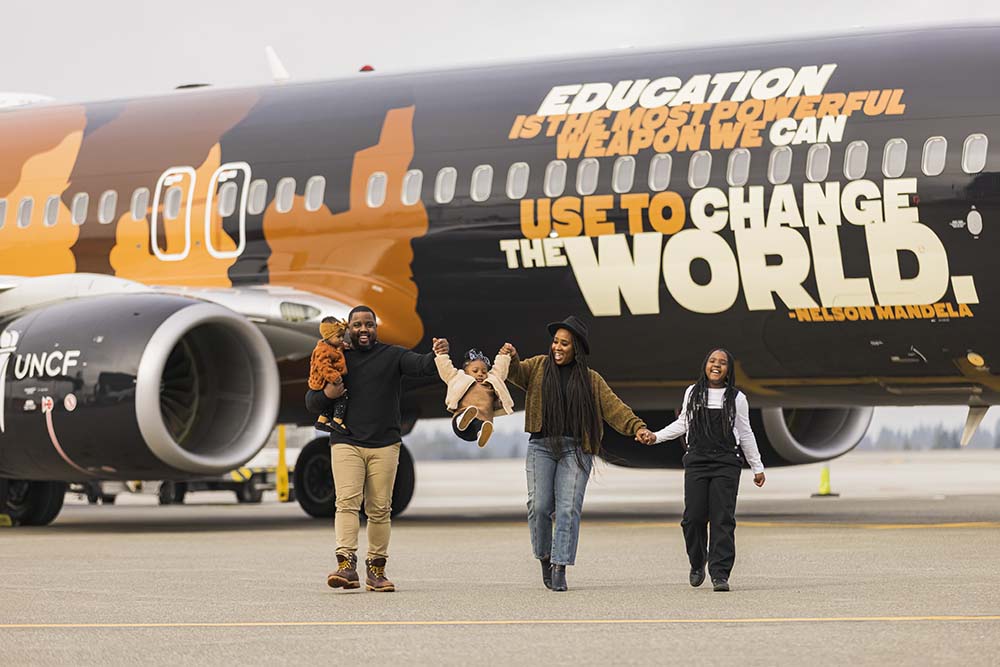
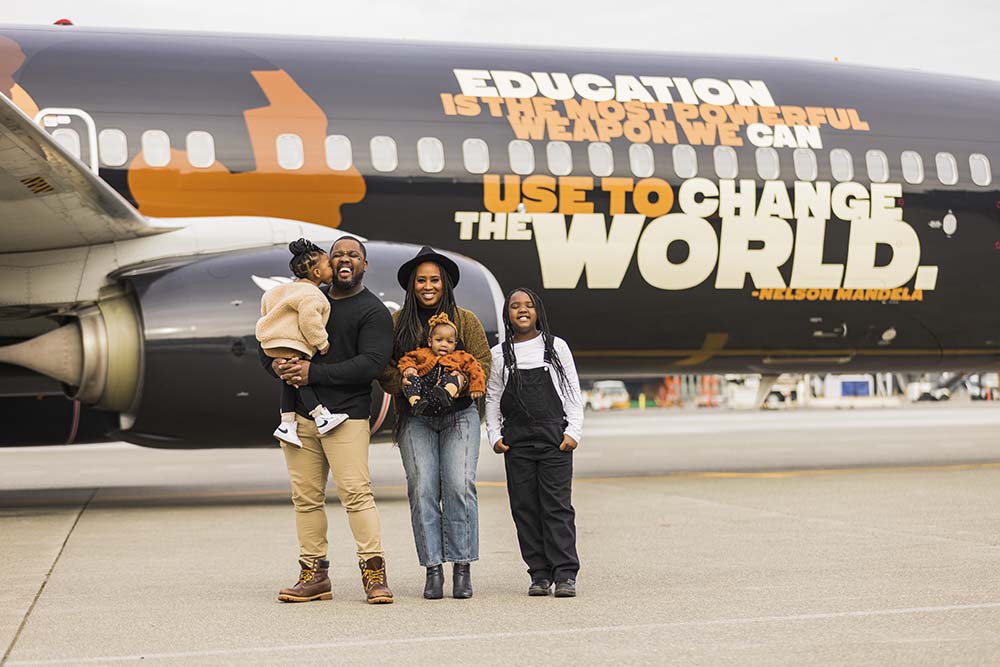
Black history is the very core of American history. It is the foundation for which this country has built its legacy and without Black stories, the America we have come to know might cease to exist. As a native to the Pacific Northwest, I haven’t always felt directly connected to the Black experience because so much of our history rests in Southern states.

Still, I have remained curious and open to learning as much as I can and look forward to teaching my three little girls about Black history. Recently, I discovered the United States Civil Rights Trail and knew this would be the perfect opportunity to immerse myself in The Deep South and see key places that helped shape our story in this country. Thanks to Alaska’s alliance with oneworld, I could use my family’s miles to book the perfect Black History Month trip and so we did.
Here’s how we flew from Seattle to Little Rock, Arkansas with three little ones in tow to embark on a journey of a lifetime:
Little Rock, AR
Our first stop on the U.S. Civil Rights Trail tour took us to Little Rock, Arkansas. I was pleasantly surprised by all the history Little Rock holds. Kicking off our trip there was so special because it brought the history books to life. Now that my daughter is nine years old and is learning about integration/desegregation in school, it was beyond moving to see her stand where nine teens once stood who challenged racial segregation in the public schools. The “Little Rock Nine” were the first African American students to desegregate high schools when they entered Little Rock Central High School in 1957.

It’s hard for her to imagine a world where Black and white kids couldn’t eat at the same lunch table, but it happened, and it was so special to take her education from schoolhouse to real life.
While we were visiting the Little Rock Central High School, we met a young man named Trey. He is currently an enrolled junior and football player. He shared with us the legacy of Little Rock High School and how much pride he has in attending school there. He says his coaches and teachers emphasize strength, determination and resiliency and that they are taught they can do and be anything in life because of the legacy that the Little Rock Nine paved the way for.


In addition to being the catalyst of national desegregation in high schools, Little Rock had a flourishing Black community in its 9th Street District, where the Mosaic Templars Cultural Center sits. The city was once a thriving and prosperous picture of Black wealth in the early 1900s, and was one of the largest self-sustaining Black economies in the South. It had everything a small city could ever need—and all of it Black-owned. I loved visiting the cultural center and learning about the impact that time had on Little Rock and how many of those families are still making an impact on the city today. We learned about how crucial the Mosaic Templars were to the Black community, providing services that weren’t available mainstream to Black families and entrepreneurs at the time, and how it became the cultural center for Black entertainment and social connections.
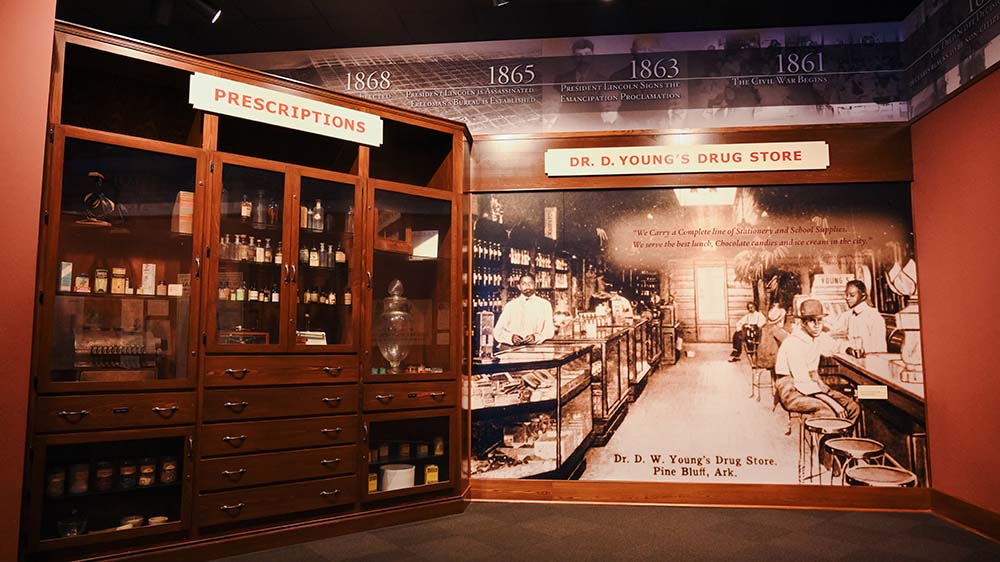


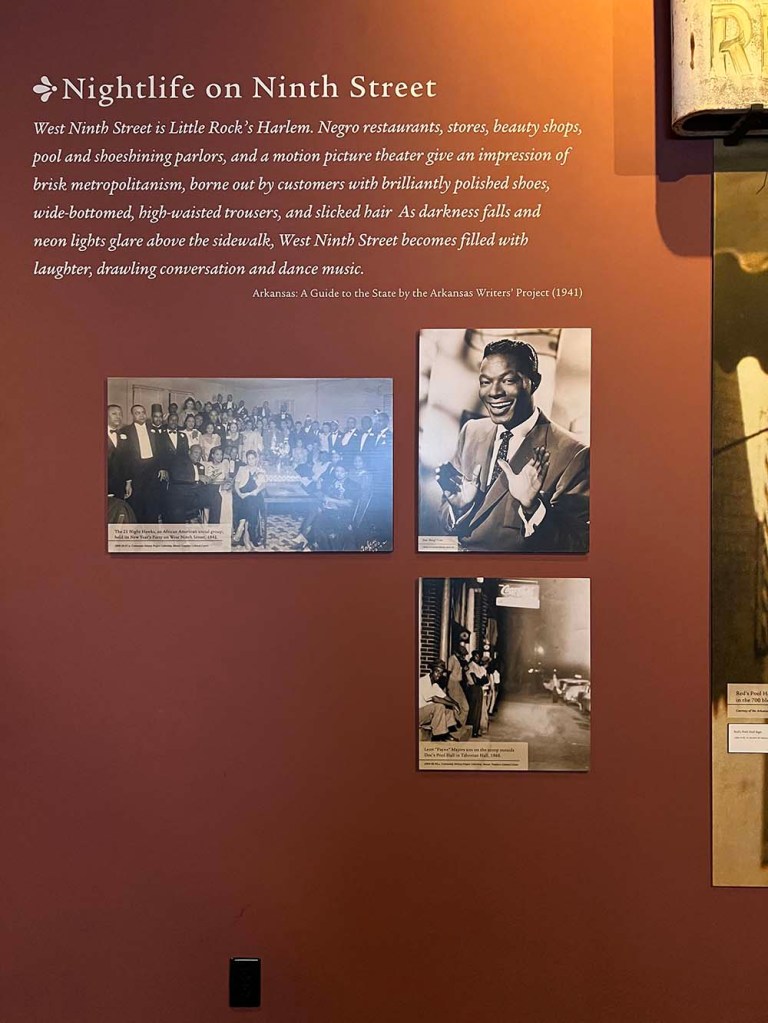
I loved getting a peek into Black culture from the lens of wealth, luxury and success —they’re meaningful moments in our history that aren’t often highlighted or spoken about. I am so used to hearing about slavery and jumping straight into Jim Crow, but when we do that we leave out the Renaissance where Black people were really starting to thrive post-slavery and were extremely prosperous. Walking through that museum, reading the letters, and taking in the pictures really painted a picture of Black history that I found so much pride in.

Memphis, TN
Once we left Little Rock, we took the 2-hour drive on I-40 E toward Memphis. Before Memphis ever knew a Dr. King, the city was one of the most important cities in the South for Blacks. After the Civil War and the abolition of slavery, African-Americans went to Memphis seeking economic opportunity and stability —and Beale Street was at the center of all of that.

Beale Street would become a cultural hub of Black influence and business, anti-segregation, the birthplace of soul and rock & roll music, while remaining the iconic inspiration behind movies and books. We kicked off our time in Memphis on that well known street, walking up and down the pathway of the shops. I loved imagining a time where Beale Street was thriving with Black businesses, restaurants, soul music and pride. Although many of the businesses on Beale today are not Black-owned, if you look up just above the doorways of the storefronts, you can see painted murals that still remain of a time when Blacks owned everything. Those canvases tell a story of Beale Street that can only be seen in movies, but are proof that we were there.


It was wandering those streets in Memphis that I really came to understand Dr. King as a person, and not a legend from story books. I had never given any thought to Martin the man and the weight he must have carried to share such a powerful message to the world. Dr. King was 39-years old when he was assassinated. I am 39-years old today. For me, Memphis brought to light Martin himself, who like me, wanted to live a good life, do right by the people around him and pursue his purpose.

We rounded out our day in Memphis meeting a couple friends for dinner at Chef Tams Underground Cafe. Chef Tam’s is an award winning Black-owned restaurant in the heart of Downtown Memphis and was the figurative hug I personally needed after a long and weary day. Food in Black culture heals, that’s why it’s called “Soul Food.” It did for our communities what nothing else could and it allowed us a way to keep African customs alive when we felt lost and so far from home. As history tells it, slaves had to eat the worst cuts of meat and leftover scraps but somehow always turned it into magic. They took what they knew from Africa and made food the epicenter of Black culture, which has stood the test of time. The tradition and culture in every Black dish like Chef Tam’s, not only makes us full but connects us to the deep roots that flow within us and make us whole—always bringing us back to who we are. I can’t say I have had a meal in recent history that rivals the food we ate at Chef Tam’s that evening, but it was an experience I will never forget. Memphis is full of Black history and nearly impossible to uncover in one trip, I’m looking forward to returning again to discover more.
Montgomery, AL
Alabama was the third stop on our trip, a special one because I had never been to that state before. In 1997, when I was 14-years-old I watched a movie written and directed by Spike Lee called “Four Little Girls.” It highlighted The 16th Street Baptist Church and the four girls who died in the basement of the church on a Sunday morning after it was bombed by the Ku Klux Klan. I remember that story living in my head for years after seeing it. Three of the four girls were 14 just like me and I remember grieving for them at the time. That was my first introduction to the stories of the fight for Civil Rights and the victims in the path toward freedom and equality.


I was anxious to get to Birmingham to see the church and it was especially emotional visiting with my own three little girls. We had such a strong reaction to visiting the church that we decided to change course and head on to Selma & Montgomery to check off other places on our Black History bucket list. Selma and Montgomery were not originally on our itinerary but ended up being my favorites and the most memorable of the entire trip.

We drove the back country roads from Birmingham to Selma and made it to the Edmund Pettus Bridge right in time to catch sunset. While we were there we met a man who shared all about the “Courageous Eight” and one member in particular, Amelia Boynton-Robinson, who called Dr. King to Selma to start the non-violent marches from Selma to Montgomery. Learning about Robinson reminded me of the special role that women played in every part of our history. Although few of them are mentioned in history books, behind every landmark movement in Black history, there was a woman holding it up and that made me so supremely proud. I was moved crossing that bridge with my three young daughters and I imagine the power and confidence my ancestors felt crossing this bridge several times marching for causes they believed in. I felt honored to walk the same path that so many of my Civil Rights heroes did and felt so much joy and pride in knowing that many of the freedoms I enjoy today started in Selma on that bridge.



It felt sacred being there and I felt so honored to be able to experience it.
Montgomery has a rich history —around every corner there was a landmark, historic site or special place dedicated to the Black experience, making it feel like the core of Black History. There was no way to take in all there was to experience in just one day but we’ll be back Montgomery!
Atlanta, GA
We ended our trip in Atlanta and although I have been to Atlanta before, I have never visited under these circumstances. Driving into Atlanta after a week of exploring all of these little cities along the Civil Rights trail made entering feel like Oz. Atlanta has long been a place where Blacks from all over the country pilgrimage for education, opportunity and economic prosperity. I always love being there and seeing Black excellence on display. Of all the places we went, I knew Atlanta would have the greatest impact on my daughter, Wisdom. She has spent most of her nine years of life learning about the same Black heroes over and over again in school, so being in the birth and resting place of Dr. King and Coretta Scott were things I knew she could easily identify and resonate with.
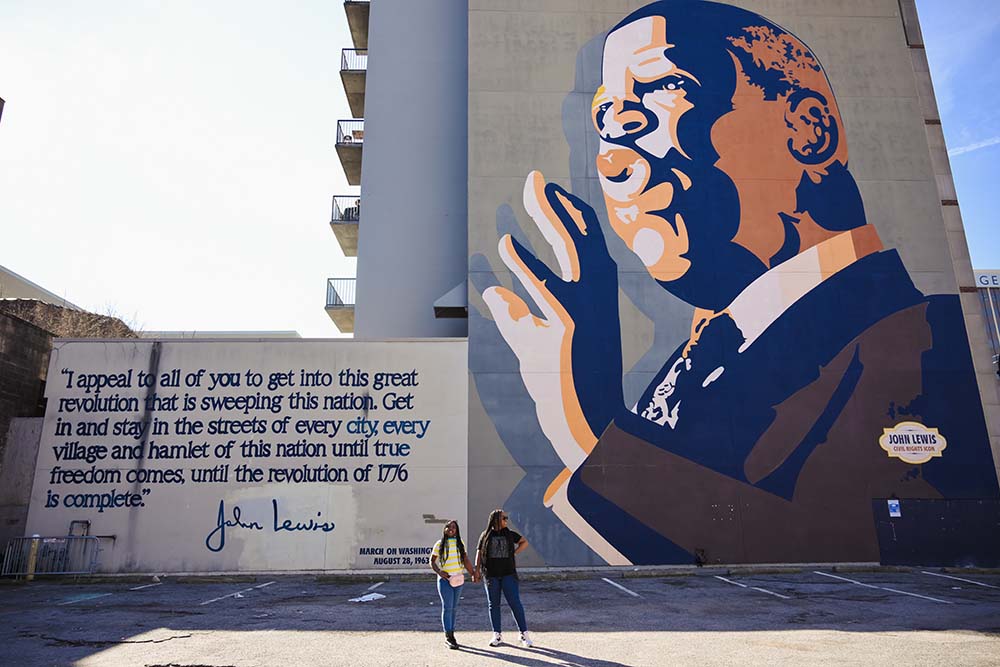
We visited the King Center and paid our respects, saw the eternal flame and took pictures in front of Dr. King’s birth home, but the moment that stood out for all of us was when we met this young man outside of Ebenezer Baptist Church. He began to share with us a little about the area without knowing why we were there or what we were doing. He talked to us about the church, the work in the community they had done during the Civil Rights movement and the work they were doing today (he even made it personal and shared how they had helped him), then he turned to Wisdom and said, “our ancestors marched for you so that you could have a good life. They did this so that you could go to school and you could learn and not worry about whether you were going to be bothered by police or have equal opportunity.” “ Dr. King marched for you because he loved you. He did all of this for you and for me because he loved us before he could even see us,” and it was in that moment, with tears streaming down my face, when Wisdom turned from him and looked at me, that I knew she finally understood.


I learned so many valuable lessons from this trip. First being, my family can do anything. We survived six days of travel, a different city every day and a new hotel every night and all with three kids in tow, two being toddlers and we lived to tell about it and want to do more. Second, I got to experience a part of the country I have been nervous to explore. I understand things in a way that is so much clearer to me. I have pride in my heritage that could only be accomplished by walking the places and seeing the sites that brought us to this moment. Third, my biggest takeaway is how much my ancestors loved me. They loved me so much and wanted so much more for me that they would sow a seed of sacrifice in faith, in hope for the fruit it would produce for the future of tomorrow and for that, I will be forever grateful.
This was a trip of a lifetime that I will never forget.
